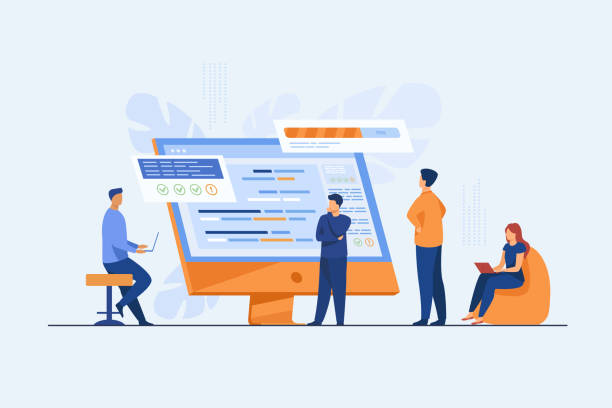مقدمهای بر سئو داخلی و اهمیت آن
![]()
در دنیای پررقابت امروز وب، حضور قدرتمند در نتایج جستجو اهمیت حیاتی دارد.
یکی از کلیدیترین جنبههای بهبود دیدهشدن وبسایت شما، #سئو_داخلی یا #بهینهسازی_درون_صفحه است.
سئو داخلی به مجموعهای از اقدامات گفته میشود که شما در داخل وبسایت خود و روی صفحات مشخصی انجام میدهید تا آنها را برای موتورهای جستجو و کاربران بهینهسازی کنید. این اقدامات شامل بهینهسازی محتوا، ساختار سایت، کلمات کلیدی، و جنبههای فنی میشود.
هدف اصلی سئو داخلی این است که به موتورهای جستجو کمک کند تا موضوع و اهمیت محتوای شما را به درستی درک کنند و در نتیجه، صفحات شما را برای جستجوهای مرتبط، در رتبههای بالاتری نمایش دهند.
بدون یک استراتژی قوی سئو داخلی، حتی بهترین محتوا نیز ممکن است هرگز به مخاطبان هدف خود نرسد.
این بخش یک دیدگاه توضیحی و اموزشی در مورد چرایی اهمیت سئو داخلی و تأثیر آن بر موفقیت آنلاین شما ارائه میدهد.
این پایهای برای درک عمیقتر مفاهیم پیشرفتهتر در فصول بعدی است و نقش حیاتی این فرایند در کسب رتبههای بالا در صفحات نتایج جستجو (SERPs) را برجسته میکند.
از دست دادن مشتریان به دلیل طراحی ضعیف سایت فروشگاهی خسته شدهاید؟ با رساوب، این مشکل را برای همیشه حل کنید!
✅ افزایش فروش و نرخ تبدیل بازدیدکننده به مشتری
✅ تجربه کاربری روان و جذاب برای مشتریان شما⚡ دریافت مشاوره رایگان
تحقیق کلمات کلیدی؛ سنگ بنای سئو داخلی
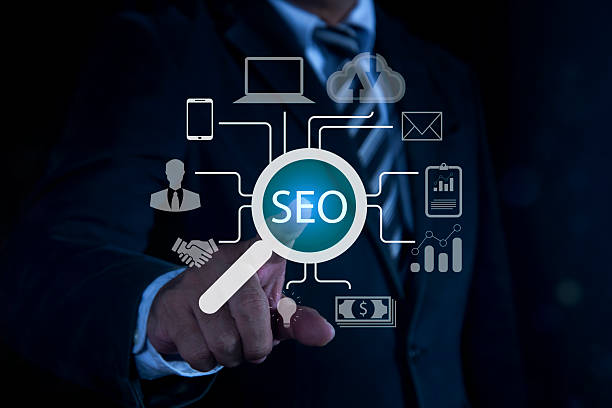
تحقیق کلمات کلیدی، ستون فقرات هر استراتژی موفق سئو داخلی است.
این فرایند شامل کشف عبارات و کلماتی است که مخاطبان هدف شما برای یافتن محصولات، خدمات یا اطلاعاتی که شما ارائه میدهید، در موتورهای جستجو وارد میکنند.
انجام یک تحقیق کلمات کلیدی جامع به شما امکان میدهد تا نه تنها نیازهای کاربران را درک کنید، بلکه محتوای خود را به گونهای بهینهسازی کنید که با هدف جستجوی آنها مطابقت داشته باشد.
این مرحله تخصصی شامل استفاده از ابزارهایی مانند Google Keyword Planner، Ahrefs، Semrush و Moz Keyword Explorer برای شناسایی کلمات کلیدی مرتبط با حجم جستجوی بالا و رقابت مناسب است.
همچنین، کشف کلمات کلیدی طولانی (long-tail keywords) که اغلب قصد کاربر را دقیقتر نشان میدهند، میتواند ترافیک هدفمندتری را به سایت شما هدایت کند.
این یک گام تحلیلی مهم است که پایه و اساس کلیه فعالیتهای بعدی بهینهسازی برای موتورهای جستجو را تشکیل میدهد و نشان میدهد چگونه درک درست از نحوه جستجوی کاربران، میتواند به طور مستقیم بر اثربخشی سئو داخلی شما تأثیر بگذارد.
انتخاب کلمات کلیدی مناسب به معنای ساختاردهی بهتر محتوا و افزایش شانس دیده شدن توسط مخاطبان واقعی است.
بهینهسازی تگ عنوان و توضیحات متا؛ اولین برداشتها

تگ عنوان (Title Tag) و توضیحات متا (Meta Description) اولین چیزهایی هستند که کاربران در نتایج جستجو مشاهده میکنند.
این دو عنصر نه تنها برای موتورهای جستجو مهم هستند، بلکه نقش حیاتی در ترغیب کاربران به کلیک کردن بر روی لینک شما دارند.
تگ عنوان باید شامل کلمه کلیدی اصلی صفحه باشد و به وضوح موضوع محتوا را بیان کند.
این تگ باید جذاب و دقیق باشد تا هم برای موتورهای جستجو بهینه باشد و هم نظر کاربران را جلب کند.
توضیحات متا نیز، اگرچه به طور مستقیم بر رتبهبندی تأثیری ندارند، اما میتوانند نرخ کلیک (CTR) را به شدت افزایش دهند.
یک توضیحات متا خوب باید خلاصهای ترغیبکننده از محتوای صفحه ارائه دهد و شامل فراخوانی به اقدام باشد.
این بخش یک راهنمایی عملی برای نوشتن تگهای عنوان و توضیحات متا موثر ارائه میدهد که جزء لاینفک سئو داخلی است.
این فرایند نیاز به درک عمیق از روانشناسی کاربر و همچنین دانش فنی برای استفاده صحیح از کلمات کلیدی دارد.
جدول زیر نمونههایی از تگهای عنوان و توضیحات متای بهینه و غیربهینه را نمایش میدهد:
| نوع تگ | مثال بهینه | مثال غیربهینه |
|---|---|---|
| تگ عنوان | آموزش کامل سئو داخلی | راهنمای گام به گام 2024 | سئو داخلی وبسایت من |
| توضیحات متا | با این راهنمای جامع سئو داخلی، رتبه سایت خود را در گوگل بهبود دهید. نکات کاربردی و تخصصی برای ارتقای سئو On-page. همین حالا شروع کنید! |
بهترین سئو داخلی برای سایت. سایت شما در صدر گوگل خواهد بود. |
اهمیت محتوای با کیفیت در سئو داخلی

محتوا پادشاه است، و این اصل در دنیای سئو داخلی بیش از پیش صادق است.
موتورهای جستجو به طور فزایندهای بر کیفیت و عمق محتوا تمرکز میکنند تا بهترین نتایج را به کاربران ارائه دهند.
یک محتوای با کیفیت بالا باید جامع، دقیق، و منحصر به فرد باشد.
این محتوا باید به سوالات کاربران پاسخ دهد، اطلاعات ارزشمندی ارائه دهد و آنها را درگیر کند.
استفاده مناسب از کلمات کلیدی، بدون زیادهروی (keyword stuffing)، برای اینکه موتورهای جستجو موضوع محتوای شما را درک کنند، حیاتی است.
این شامل استفاده از کلمات کلیدی مرتبط و مترادف نیز میشود.
علاوه بر این، محتوا باید ساختار یافته باشد، با استفاده از سربرگها، لیستها و پاراگرافهای کوتاه که خوانایی آن را افزایش دهد.
این رویکرد اموزشی و تخصصی نه تنها برای رباتهای موتور جستجو جذاب است، بلکه تجربه کاربری بهتری را نیز فراهم میکند، که به طور غیرمستقیم بر رتبه سئو شما تأثیر میگذارد.
محتوای سوالبرانگیز که کاربران را به تعامل وادار میکند و محتوای سرگرمکننده که تجربه مثبتی ایجاد میکند، میتوانند به افزایش زمان ماندگاری کاربر در سایت (Dwell Time) و کاهش نرخ پرش (Bounce Rate) کمک کنند، که هر دو سیگنالهای مثبت برای موتورهای جستجو هستند.
کیفیت محتوا یکی از مهمترین ستونهای موفقیت در سئو است.
از نرخ تبدیل پایین سایت فروشگاهیتان ناامید شدهاید؟ رساوب، سایت فروشگاهی شما را به ابزاری قدرتمند برای جذب و تبدیل مشتری تبدیل میکند!
✅ افزایش چشمگیر نرخ تبدیل بازدیدکننده به خریدار
✅ تجربه کاربری بینظیر برای افزایش رضایت و وفاداری مشتریان⚡ دریافت مشاوره رایگان از رساوب!
بهینهسازی ساختار URL و معماری اطلاعات
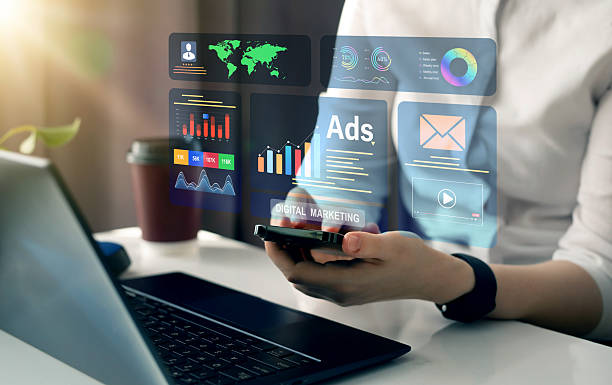
ساختار URL و معماری اطلاعات وبسایت شما نقش مهمی در سئو داخلی ایفا میکند.
یک URL سئو-فرندلی باید کوتاه، توصیفی و شامل کلمات کلیدی مرتبط باشد.
URLهای تمیز و قابل فهم به کاربران و موتورهای جستجو کمک میکنند تا موضوع صفحه را به راحتی درک کنند.
به عنوان مثال، به جای “yoursite.com/?p=123″، از “yoursite.com/blog/seodakheli-rahnama” استفاده کنید.
معماری اطلاعات وبسایت شما نیز باید منطقی و سازماندهی شده باشد.
این به معنای ایجاد یک سلسله مراتب واضح برای صفحات شماست، به طوری که کاربران و رباتهای موتور جستجو بتوانند به راحتی در سایت شما حرکت کنند و صفحات مختلف را کشف کنند.
یک ساختار منطقی، مانند استفاده از دستهبندیها و زیردستهبندیها، به موتورهای جستجو کمک میکند تا ارتباط بین صفحات مختلف را درک کنند و اعتبار لینک را به طور موثرتری در سراسر سایت توزیع کنند.
این یک رویکرد تحلیلی و توضیحی برای بهبود قابلیت خزش (Crawlability) و نمایه سازی (Indexability) سایت شما است که بخش مهمی از سئو داخلی محسوب میشود.
از URLهای بسیار طولانی و پر از کاراکترهای خاص خودداری کنید و سعی کنید همیشه URLها را خوانا و مرتبط با محتوای صفحه نگه دارید.
اهمیت استفاده از تگهای Heading (H1-H6)
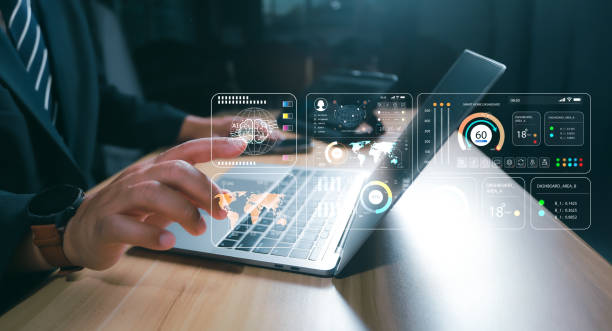
تگهای Heading یا سربرگها (H1 تا H6) نه تنها به ساختارمند کردن محتوای شما کمک میکنند، بلکه سیگنالهای مهمی را به موتورهای جستجو درباره ساختار و موضوعیت محتوای شما میفرستند.
تگ H1 باید عنوان اصلی صفحه باشد و معمولاً شامل کلمه کلیدی اصلی صفحه است.
هر صفحه باید فقط یک تگ H1 داشته باشد.
تگهای H2 تا H6 برای تقسیمبندی محتوا به بخشهای فرعی استفاده میشوند و سلسله مراتب اهمیت را نشان میدهند.
استفاده صحیح از این تگها خوانایی محتوا را برای کاربران بهبود میبخشد و به موتورهای جستجو کمک میکند تا موضوعات فرعی و ارتباط آنها با عنوان اصلی را بهتر درک کنند.
این رویکرد اموزشی و توضیحی به شما کمک میکند تا محتوای خود را هم برای کاربران و هم برای رباتهای موتور جستجو بهینهسازی کنید.
از کلمات کلیدی مرتبط در تگهای سربرگ خود استفاده کنید، اما از زیادهروی پرهیز کنید.
یک ساختار منطقی با استفاده از تگهای H به معنای سئو داخلی قویتر و تجربه کاربری بهتر است.
این یکی از جنبههای سئو On-Page است که اغلب نادیده گرفته میشود اما تأثیر زیادی بر سازماندهی و درک محتوای شما توسط موتورهای جستجو دارد.
استراتژی لینکسازی داخلی؛ قدرت انتقال اعتبار

لینکسازی داخلی یکی از قویترین ابزارهای سئو داخلی برای بهبود ساختار سایت، توزیع اعتبار لینک (Link Equity) و افزایش قابلیت خزش است.
لینکهای داخلی، کاربر و موتورهای جستجو را به صفحات مرتبط دیگر در وبسایت شما هدایت میکنند.
این کار نه تنها به موتورهای جستجو کمک میکند تا تمام صفحات سایت شما را پیدا و ایندکس کنند، بلکه به آنها میفهماند که کدام صفحات برای شما مهمتر هستند.
یک استراتژی لینکسازی داخلی قوی میتواند اعتبار (PageRank) را از صفحات قویتر به صفحات ضعیفتر منتقل کند و به بهبود رتبه کلی سایت شما کمک کند.
استفاده از انکر تکستهای (Anchor Text) توصیفی و مرتبط در لینکهای داخلی بسیار مهم است.
این بخش یک راهنمایی عملی و تخصصی برای ایجاد یک شبکه لینک داخلی قوی و موثر ارائه میدهد.
با ایجاد پیوندهای مرتبط و منطقی بین صفحات خود، به موتورهای جستجو کمک میکنید تا ساختار سایت شما را بهتر درک کنند و تجربه کاربری را بهبود میبخشید.
لینکسازی داخلی از اصول اساسی سئو داخلی است.
جدول زیر انواع لینکهای داخلی و اهمیت آنها را توضیح میدهد:
| نوع لینک داخلی | توضیح | اهمیت برای سئو داخلی |
|---|---|---|
| لینکهای ناوبری (منو) | لینکهایی که در منوها، فوترها و سایدبارها قرار دارند. | برای ساختار کلی سایت و دسترسی آسان به صفحات اصلی حیاتی هستند. |
| لینکهای متنی (Contextual) | لینکهایی که در متن اصلی محتوا قرار میگیرند و به صفحات مرتبط اشاره دارند. | اعتبار را بین صفحات منتقل میکنند و به موتورهای جستجو در درک ارتباط موضوعی کمک میکنند. |
| لینکهای بردکرامب (Breadcrumbs) | لینکهایی که مسیر کاربر را از صفحه اصلی تا صفحه فعلی نشان میدهند. | به بهبود تجربه کاربری و ساختار سلسله مراتبی سایت کمک میکنند. |
بهینهسازی تصاویر؛ فراتر از زیبایی
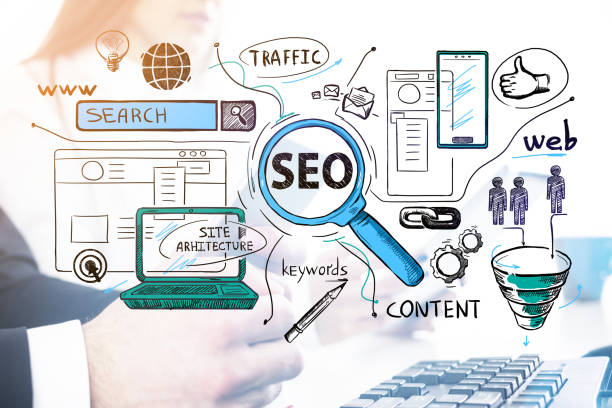
تصاویر نقش مهمی در جذابیت بصری وبسایت شما و همچنین در سئو داخلی ایفا میکنند.
بهینهسازی تصاویر شامل چندین جنبه است: کاهش حجم فایل بدون افت کیفیت، استفاده از فرمتهای مناسب (مانند WebP)، و مهمتر از همه، بهینهسازی متن جایگزین (Alt Text).
متن جایگزین باید توصیفی و شامل کلمات کلیدی مرتبط باشد، زیرا موتورهای جستجو نمیتوانند تصاویر را “ببینند” و برای درک محتوای آنها به Alt Text متکی هستند.
این همچنین برای دسترسپذیری وبسایت شما برای کاربران با مشکلات بینایی حیاتی است.
این بخش یک راهنمای توضیحی و اموزشی برای بهینهسازی تصاویر برای سئو ارائه میدهد که به بهبود رتبه شما در جستجوی تصاویر گوگل و همچنین سرعت بارگذاری صفحه کمک میکند.
سرعت بارگذاری صفحه یکی از فاکتورهای مهم رتبهبندی است و تصاویر بهینهنشده میتوانند به شدت آن را کاهش دهند.
در نتیجه، بهینهسازی تصاویر یک جزء حیاتی از سئو داخلی برای بهبود عملکرد کلی سایت شماست.
آیا نگران نرخ تبدیل پایین سایت فروشگاهیتان هستید و فروش دلخواهتان را ندارید؟
رساوب، راهکار تخصصی شما برای داشتن یک سایت فروشگاهی موفق است.
✅ افزایش چشمگیر نرخ تبدیل و فروش
✅ طراحی حرفهای و کاربرپسند برای جلب رضایت مشتریان
⚡ برای تحول در فروش آنلاین آمادهاید؟ مشاوره رایگان بگیرید!
بهبود سرعت بارگذاری صفحه؛ تجربه کاربری و سئو
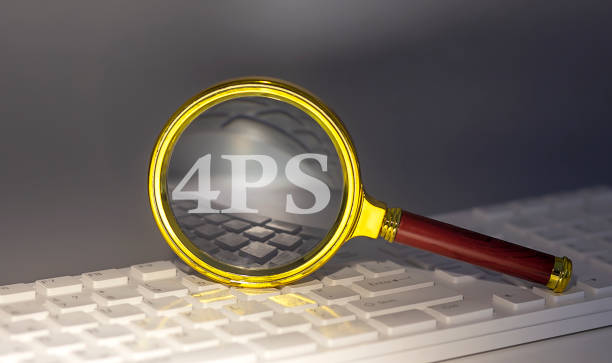
سرعت بارگذاری صفحه (Page Speed) نه تنها برای تجربه کاربری حیاتی است، بلکه یکی از فاکتورهای مهم رتبهبندی در سئو داخلی به شمار میرود.
کاربران انتظار دارند صفحات وب سریع بارگذاری شوند و اگر صفحهای کند باشد، احتمالاً آن را ترک میکنند.
موتورهای جستجو نیز به سایتهایی که تجربه کاربری بهتری ارائه میدهند، از جمله سرعت بارگذاری بالا، امتیاز مثبت میدهند.
عوامل متعددی بر سرعت بارگذاری صفحه تأثیر میگذارند، از جمله حجم تصاویر، کدنویسی ناکارآمد، استفاده از اسکریپتهای سنگین، و کیفیت هاستینگ.
این بخش یک راهنمایی تخصصی برای شناسایی گلوگاههای سرعت و اعمال بهبودها ارائه میدهد، مانند فشردهسازی تصاویر، بهینهسازی کد CSS و JavaScript، استفاده از کشینگ (Caching)، و انتخاب یک سرویس هاستینگ مناسب.
بهبود سرعت بارگذاری صفحه میتواند به طور مستقیم بر نرخ پرش (Bounce Rate)، زمان ماندگاری کاربر در سایت (Dwell Time) و در نهایت، بر رتبهبندی شما در نتایج جستجو تأثیر بگذارد.
این یک جنبه تحلیلی مهم در استراتژی بهینهسازی سرعت سایت برای سئو داخلی است که نتیجه آن رضایت بیشتر کاربر و رتبه بهتر در نتایج موتورهای جستجو خواهد بود.
مانیتورینگ و تحلیل عملکرد سئو داخلی
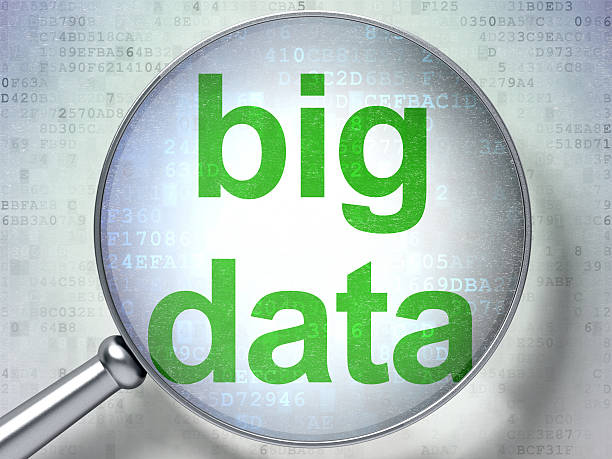
پس از اعمال تغییرات مربوط به سئو داخلی، کار شما به پایان نمیرسد.
مانیتورینگ و تحلیل مداوم عملکرد سایت، جزء جداییناپذیر یک استراتژی موفق سئو داخلی است.
ابزارهایی مانند Google Analytics و Google Search Console به شما امکان میدهند تا ترافیک سایت، کلمات کلیدی رتبهبندی شده، نرخ پرش، زمان ماندگاری و سایر معیارهای مهم را ردیابی کنید.
با بررسی این دادهها، میتوانید اثربخشی تغییرات خود را ارزیابی کرده و فرصتهای جدید برای بهبود را شناسایی کنید.
این فرایند تحلیلی به شما کمک میکند تا استراتژی خود را به طور مداوم تنظیم و بهینه کنید تا بهترین نتایج ممکن را به دست آورید.
به عنوان مثال، اگر متوجه شوید که یک صفحه خاص نرخ پرش بالایی دارد، ممکن است نشاندهنده نیاز به بهبود محتوا یا فراخوانی به اقدام باشد.
این بخش یک خبری و راهنمایی در مورد اهمیت تحلیل دادهها و ابزارهای مورد نیاز برای حفظ یک استراتژی سئو داخلی پویا و موثر است.
پیگیری روندها و واکنش نشان دادن به تغییرات الگوریتمهای موتورهای جستجو، کلید موفقیت پایدار در سئو است.
سوالات متداول
| شماره | سوال | پاسخ |
|---|---|---|
| 1 | سئو داخلی (On-Page SEO) چیست؟ | سئو داخلی به مجموعه اقداماتی گفته میشود که درون وبسایت و برای بهینهسازی صفحات آن انجام میشود تا رتبه بهتری در نتایج جستجو کسب کند. |
| 2 | مهمترین عامل در سئو داخلی چیست؟ | محتوای با کیفیت، مرتبط و جامع که نیاز کاربر را برطرف کند، مهمترین عامل در سئو داخلی است. |
| 3 | تگ عنوان (Title Tag) چه نقشی در سئو داخلی دارد؟ | تگ عنوان یکی از مهمترین فاکتورهاست که به موتورهای جستجو و کاربران میگوید محتوای صفحه در مورد چیست. باید شامل کلمه کلیدی اصلی و جذاب باشد. |
| 4 | تگ توضیحات متا (Meta Description) چقدر اهمیت دارد؟ | اگرچه مستقیماً بر رتبهبندی تأثیر نمیگذارد، اما بر نرخ کلیک (CTR) در نتایج جستجو بسیار مؤثر است و کاربران را تشویق به بازدید از صفحه میکند. |
| 5 | بهینهسازی تصاویر در سئو داخلی چگونه انجام میشود؟ | با استفاده از تگ alt مناسب، فشردهسازی حجم تصویر برای افزایش سرعت بارگذاری و نامگذاری معنیدار فایل تصویر. |
| 6 | اهمیت استفاده از هدینگها (H1, H2, H3) در سئو داخلی چیست؟ | هدینگها به ساختاردهی محتوا کمک کرده، خوانایی را افزایش میدهند و به موتورهای جستجو در درک سلسلهمراتب و موضوعات فرعی محتوا کمک میکنند. |
| 7 | لینکسازی داخلی (Internal Linking) به چه معناست و چه فوایدی دارد؟ | لینکسازی داخلی به معنای ایجاد لینک بین صفحات مختلف یک وبسایت است. این کار به توزیع اعتبار، بهبود ناوبری کاربر و کمک به خزش موتورهای جستجو کمک میکند. |
| 8 | کلمه کلیدی اصلی (Focus Keyword) در کجای صفحه باید قرار گیرد؟ | کلمه کلیدی اصلی باید در تگ عنوان، توضیحات متا، H1، پاراگراف اول، و به صورت طبیعی و در طول متن و در صورت امکان در آدرس URL قرار گیرد. |
| 9 | محتوای کپی یا تکراری چه تأثیری بر سئو داخلی دارد؟ | محتوای تکراری میتواند به رتبهبندی سایت آسیب برساند و باعث سردرگمی موتورهای جستجو شود که کدام نسخه اصلی است و ممکن است آن را اسپم تشخیص دهند. |
| 10 | سرعت بارگذاری صفحه چقدر در سئو داخلی مهم است؟ | سرعت بارگذاری صفحه یک عامل رتبهبندی مهم است و مستقیماً بر تجربه کاربری تأثیر میگذارد. صفحات کند باعث افزایش نرخ پرش کاربران میشوند. |
و دیگر خدمات آژانس تبلیغاتی رسا وب در زمینه تبلیغات
تحلیل داده هوشمند: خدمتی اختصاصی برای رشد افزایش بازدید سایت بر پایه تحلیل هوشمند دادهها.
هویت برند هوشمند: بهینهسازی حرفهای برای بهبود رتبه سئو با استفاده از استفاده از دادههای واقعی.
اتوماسیون بازاریابی هوشمند: جذب مشتری را با کمک بهینهسازی صفحات کلیدی متحول کنید.
کمپین تبلیغاتی هوشمند: طراحی شده برای کسبوکارهایی که به دنبال برندسازی دیجیتال از طریق سفارشیسازی تجربه کاربر هستند.
هویت برند هوشمند: مدیریت کمپینها را با کمک سفارشیسازی تجربه کاربر متحول کنید.
و بیش از صد ها خدمات دیگر در حوزه تبلیغات اینترنتی ،مشاوره تبلیغاتی و راهکارهای سازمانی
تبلیغات اینترنتی | استراتژی تبلیعاتی | ریپورتاژ آگهی
منابع
? آژانس دیجیتال مارکتینگ رساوب آفرین، متخصص در ارتقاء کسبوکار شما با ارائه خدمات جامع سئو، تبلیغات هدفمند و طراحی وبسایت حرفه ای.
📍 تهران ، خیابان میرداماد ،جنب بانک مرکزی ، کوچه کازرون جنوبی ، کوچه رامین پلاک 6

